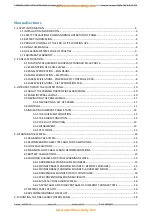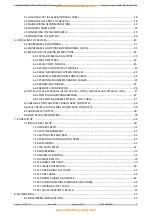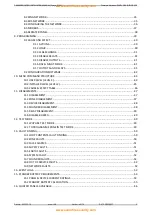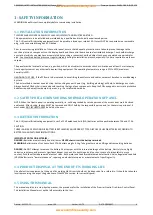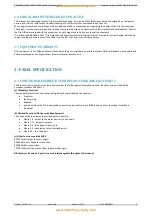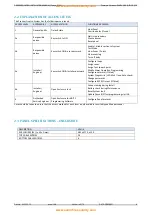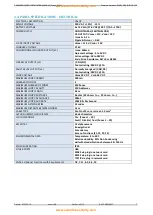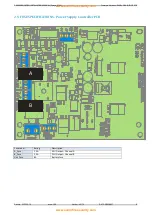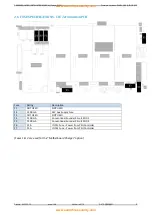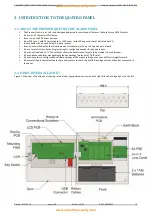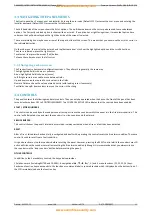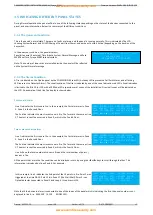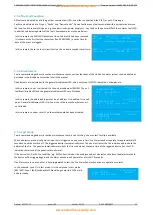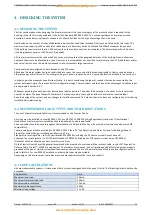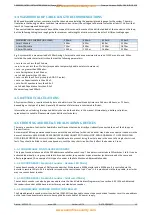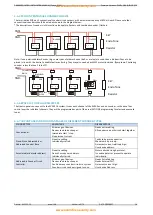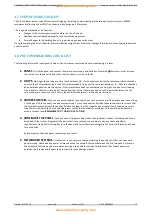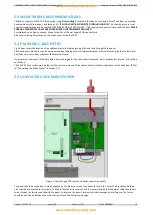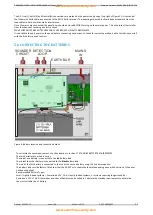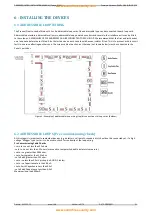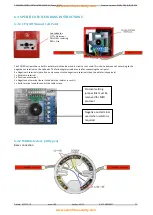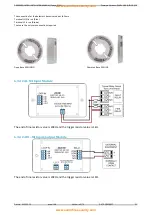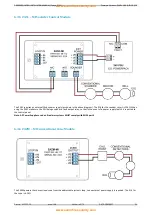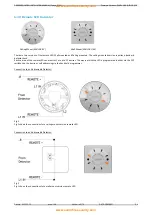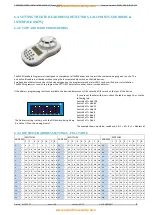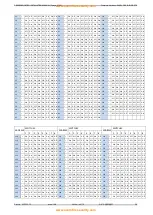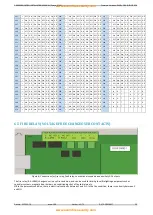
PREMIER QUATRO INSTALLATION MANUAL (Fyreye MKII) Firmware Versions: PANEL 1.84 & LOOP 3.70
Doc No: GLT-215-7-1 Issue: 1.36 Author: NJ/TE DATE: 25/05/2017
14
4 - DESIGNING THE SYSTEM
4.1 DESIGNING THE SYSTEM
The first consideration when designing the fire alarm system is the type or category of fire protection that is required for the
building. In the UK this is fully explained in the British Standard BS 5839-1:2013. This contains guidance on how many smoke
detectors, heat detectors, call points, sounders etc. should be fitted for the type of coverage that is required.
Next decide on the number of loops of addressable devices that need to be installed. Quatro can be fitted with 1 to 4 loops. The
maximum loop capacity is 250 devices (also called points or addresses), but do not exceed the 500mA maximum loop current.
If the building requires more than 4 x 250 devices, then the control panels can be networked. The network capacity is 32 panels
(including repeater panels or LED Driver’s if required).
All fire alarm systems must be subdivided into zones, which represent the geographical areas of the building. Quatro allows any
number of devices to be allocated to a zone. However, it is assumed that a zone will not contain more than 32 fire detectors and/or
manual call points, since this would correspond to an unacceptably large search area.
Each panel may be configured to have between 1 and 250 zones.
Although a fire alarm system has to be subdivided into zones, the cause and effect actions applicable to Quatro can be based on
other groupings as well as zones. The other groupings are panels, loops and points. Cause and effect is described in the Section 9.1.
In order to gain the maximum benefits from Quatro, it is worth considering the types of sounder that can be connected to the
system before getting to the cause and effect configuration stage. These sounders and their respective advantages / disadvantages
are explained in Section 4.6.7.
Whenever possible, give each device as descriptive a label as possible. The better the description, the easier it is to locate in the
event of an alarm. The panel allows 22 characters. It may be necessary to use abbreviations to achieve the required label.
Keep the design of the system, and any changes to it well documented. This makes it easier to trace any configuration errors during
installation & commissioning.
4.2 RECOMMENDED CABLE TYPES AND THEIR LIMITATIONS
The use of Mineral Insulated Cable is not recommended on the Premier Quatro.
All wiring must be installed to meet BS 5839-1:2013 and BS 7671:2008 (IEE Wiring Regulations) standards. Other National
standards of fire alarm system installation should be adhered to where applicable.
Screened cables should be used throughout the installation to help shield the Panel from outside interference and ensure EMC
compatibility.
The two categories of cable according to BS 5839-1:2013, Clause 26 “Fire Detection and Alarm Systems for Buildings (Code of
Practice for System Design, Installation and Servicing)” are:
Standard fire resisting cable – to PH30 classification of EN50200 (including the 30 minute survival time of Annex E)
Enhanced fire resisting cable – to PH120 classification of EN50200 (including the 120 minute survival time of BS 8434-2)
(Note that all cables should be at least 1mm2 cross section)
On the Premier Quatro Panel the general recommendation would be to use standard fire resistant cable, such as GLT Exports Fire
Defence Cable, Firetuff™, FP200 or an equivalent. These cables are screened, and will provide good EMC shielding when properly
grounded at the panel. Certain system specifications may demand the use of a particular type of cable and due regard should be
paid to this fact. For non-BS5839 installations, other cable types may be suitable.
Depending on the environment, the cables may need mechanical protection (such as a conduit).
4.3 LOOP CALCULATIONS
Like most addressable systems, it is important that a system is designed within the panel’s limits. The following Limits should not be
exceeded:-
Characteristic
Limit
Maximum loop load
500mA
Maximum Quiescent loop load
400mA
Maximum cable resistance
22 ohms
Maximum cable capacitance
400nF
Minimum loop voltage
17V DC


